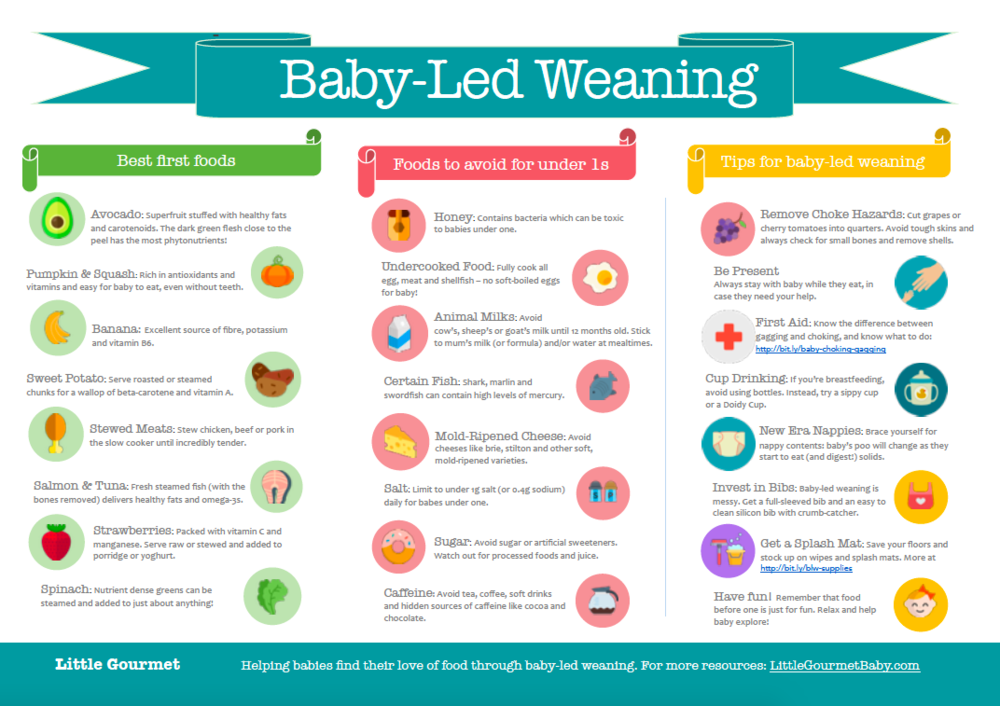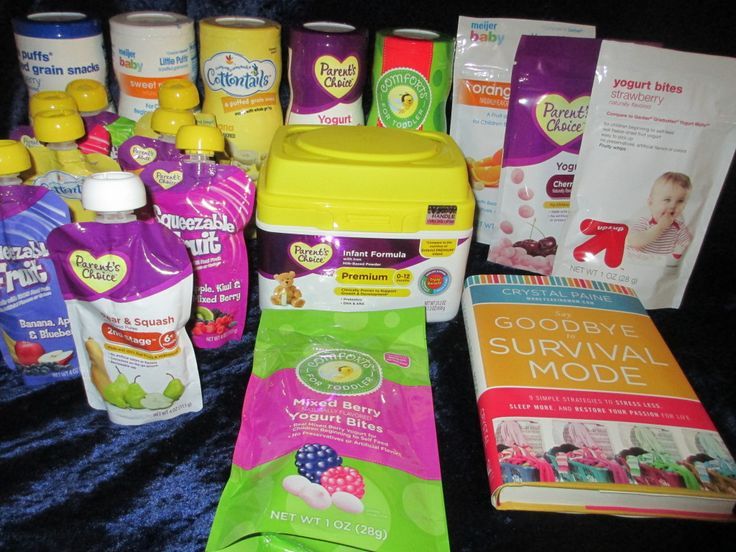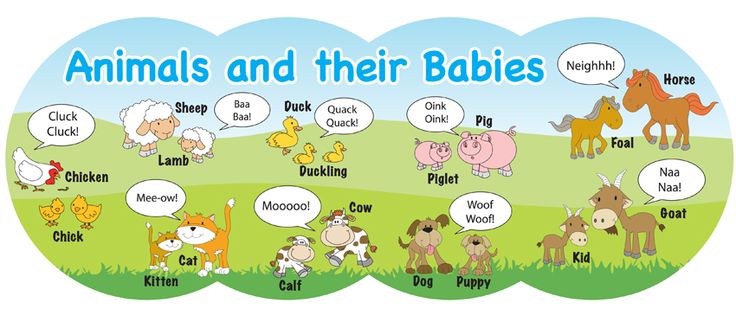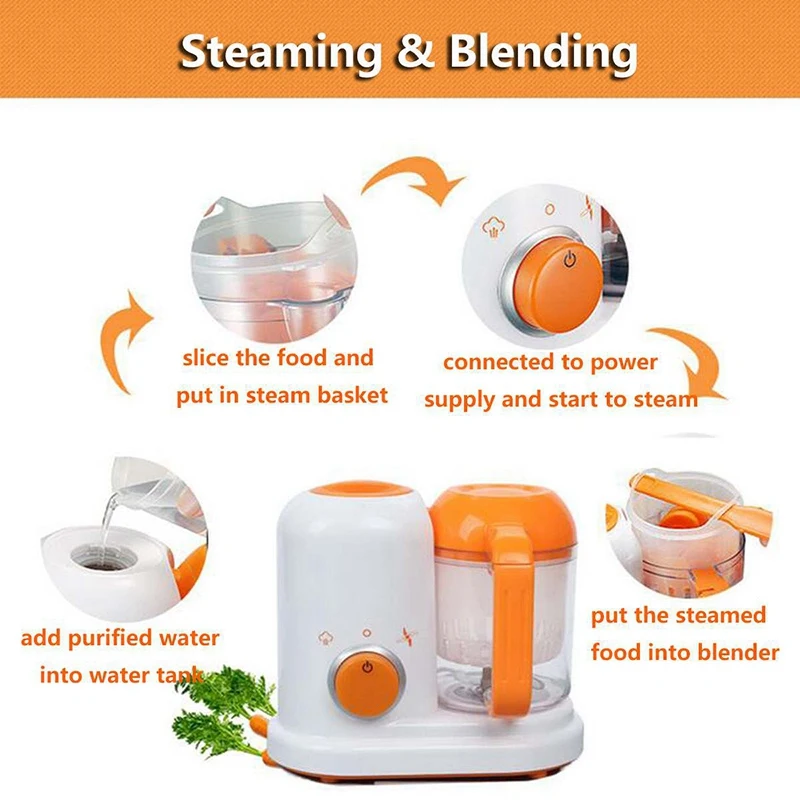Best vegetables to feed baby
Best Vegetables for Babies
We all want our kids to grow up eating a healthy diet — and it’s hard to think of a healthier food than vegetables. Full of complex carbs, fiber, vitamins, minerals, and antioxidants, veggies are a dietary building block of wellness, even for very young children.
But the question always follows: Can you actually get your kid to like vegetables? The battle over a plate of veggies is a classic parent-child power struggle.
Here’s how to not only choose the best veggies for your baby, but prepare them in ways that will help your kiddo become a veggie lover for life.
For babies just starting to eat solids (around 6 months or so), try these six softer, blendable veggies.
Carrots
Bugs Bunny’s fave orange veggies are a baby food staple for good reason. Once cooked, carrots puree beautifully and offer a not-too-piquant flavor for baby’s sensitive palate.
Plus, they contain plenty of fiber to promote healthy digestion, as well as beta carotene, which converts to vitamin A to boost vision and immune function.
Spinach
Speaking of cartoon characters’ favorite vegetables, remember Popeye’s love for spinach? This leafy green deserves its cartoon reputation for being rich in iron — a nutrient babies especially need for energy and development.
Cooked, pureed spinach is best for younger infants. Add a sprinkle of salt to enhance taste.
Pumpkin
Pumpkin may bring to mind chilly temperatures and falling leaves, but with canned varieties, your child can enjoy the gourds any time of year. Pureed pumpkin’s smooth texture is ideal as one of baby’s first foods, and high amounts of A and C round out its nutrient profile.
Avocados
Avocados are the heroes of healthy monounsaturated fats. These important macronutrients help develop baby’s brain and nervous system, as well as increase absorption of fat-soluble vitamins A, D, E, and K. Meanwhile, each serving of avocado comes with a sizable dose of fiber and folate.
Keep in mind that a little bit of high fat avocado goes a long way.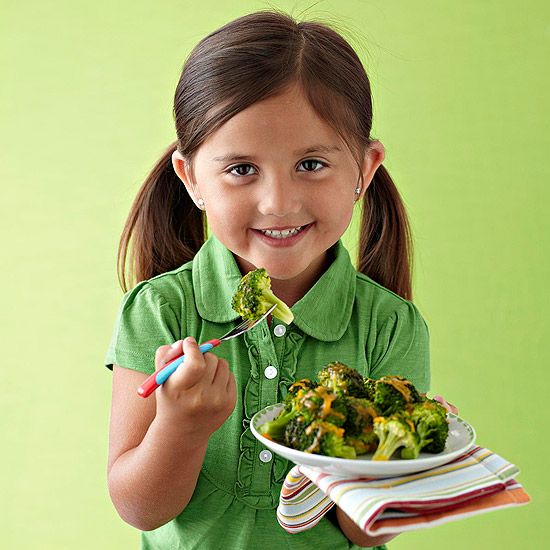 Start with a serving of about 1 tablespoon, mashed.
Start with a serving of about 1 tablespoon, mashed.
Sweet potatoes
Mashed cooked sweet potatoes not only make for easy-peasy serving to your little one, they’re loaded with nutrients, too! Like carrots and pumpkin, sweet potatoes burst with immune- and vision-supporting vitamin A, plus plenty of fiber, manganese, vitamin B6, and vitamin C.
When serving sweet potato to your baby, be sure to mash well and remove the skin.
Peas
Mushy peas might not sound like a culinary delight to adults, but they’re an excellent choice for infants. These little green balls are one of the highest-protein veggies, with 4 grams per serving.
To serve, simply steam frozen peas and blend until pureed. You can even add a bit of breast milk for a thinner consistency.
As your baby becomes more of a solid food pro, try introducing these six veggies.
Broccoli
With cancer-fighting compounds and micronutrients galore, broccoli is an extremely healthy veggie for people of all ages.
Turn your baby on to this cruciferous superfood by serving steamed or roasted broccoli by itself, or add it to pasta dishes, cheesy baked potatoes, or soups cooled to room temperature.
Cauliflower
Has your little eater cut a few teeth? Now’s the time to try cooked cauliflower! The chunky texture of this veggie in a puree (or roasted and roughly mashed) offers just the right level of challenge for new chewers.
Zucchini
When the summer months roll around, take advantage of a bumper crop of zucchini by feeding some to baby. Green and yellow summer squash offer mild flavor and nutrients like manganese, potassium, and vitamin A.
Try serving your baby zucchini prepared as cooked, spiralized “zoodles” with a tomato sauce or thin-sliced and pan-sautéed with a bit of olive oil.
Tomatoes
Before long, your kiddo will likely be chowing down on all sorts of tomato-based foods like pizza and spaghetti with marinara. For now, get them started on the fresh, whole version by serving tomatoes in finely chopped pieces.
Ample water content for hydration plus vitamins C and A add to tomatoes’ value as a healthy first veggie.
Onions
Because of their pungency, you might shy away from feeding your child onions. But these aromatic alliums can be a great way to add flavor to baby’s diet without sodium or anything artificial. Try cooked onions in casseroles or mixed in with other vegetables.
Beets
We’ll be honest: Beets are an acquired taste. That said, you can make them more tempting for baby by pureeing cooked beets with fruits like blueberries or cherries.
The pigments in these colorful blends might leave baby with a red beet “mustache,” but beets’ high content of folate, manganese, and fiber are well worth it.
You can help your child take the lead in the weaning process by providing them plenty of self-feeding opportunities. Incorporate these four bite-sized, easily grasped veggies in baby-led weaning (BLW).
Butternut squash
When first starting with baby-led weaning, opt for softer foods. They’re easier for baby to gnaw, which may allay your concerns about choking. (Still, carefully supervise your baby during mealtimes.)
They’re easier for baby to gnaw, which may allay your concerns about choking. (Still, carefully supervise your baby during mealtimes.)
With their tender texture and sweet taste, pieces of cooked butternut squash are an excellent first round of BLW. Dust cooked pieces with cinnamon for even more flavor.
Bell peppers
Fun fact: Ounce for ounce, bell peppers contain more vitamin C than oranges! This important vitamin not only strengthens the immune system, it acts as an anti-inflammatory antioxidant.
Give baby’s health a leg up by letting them self-feed diced bell peppers. If the peppers’ strong flavor gets a negative reaction, try serving them with cheese or hummus.
Cucumbers
There’s nothing quite so refreshing as a cool, crunchy cucumber. These veggies’ cooling sensation can be especially soothing for babies’ teething gums. To reduce the risk of choking, peel the skin off of cucumbers and dice them into small pieces as part of baby-led weaning.
Edamame
Everyone knows that popping edamame beans out of their shells is half the fun of eating these tender legumes. However, for baby-led weaning, start by placing shelled, slightly mashed edamame on the high chair tray. Their high protein content will fuel baby’s playtime, as well as build muscle tissue.
However, for baby-led weaning, start by placing shelled, slightly mashed edamame on the high chair tray. Their high protein content will fuel baby’s playtime, as well as build muscle tissue.
Vegetables are among the healthiest foods on the planet. Could anything go wrong with feeding them to your baby?
For very young children, there are some safety concerns about nitrates — compounds certain vegetables absorb from soil.
When babies consume excessive amounts of nitrates, it can lead to a condition called methemoglobinemia. Babies with this condition may develop a blue tinge on their hands, feet, and mouth, and may have fatigue and difficulty breathing.
If your baby has any of these symptoms — especially shortness of breath — seek medical attention immediately.
Root vegetables like beets and carrots and leafy greens (especially spinach) do contain relatively high levels of nitrates. But this doesn’t mean you shouldn’t feed these healthy veggies to your baby when they start solids.
Older research from 2005 shows that high amounts of nitrates from vegetables are primarily harmful to babies 3 months of age and younger — but since it’s not recommended to introduce solid foods until around 6 months, this is likely to be a nonissue.
- Baby carrots. “Baby” may be in their name, but baby carrots are not a good choice for infants. Their size and hardness make them a choking hazard.
- Raw celery. The stringy fibers of raw celery can easily lodge in a baby’s throat. If you choose to serve your baby celery, be sure it’s cooked thoroughly and cut into small pieces.
- Corn. Creamed or pureed corn is fine for infants, but avoid serving the small, chewy kernels by themselves.
- Any hard, raw vegetables. According to the American Academy of Pediatrics, chunks of raw vegetables remain a choking hazard until children reach the age of 4 years.
As with any food group, you may run into snags when introducing your child to the wide and colorful world of veggies. Although allergies to vegetables are rare and no vegetable is among the top eight food allergens, it’s always possible for a child to have an allergic reaction to any food.
Although allergies to vegetables are rare and no vegetable is among the top eight food allergens, it’s always possible for a child to have an allergic reaction to any food.
If your baby has symptoms like vomiting, diarrhea, wheezing, hives, or a rash after eating a particular vegetable, talk to your pediatrician about the possibility of an allergy or food sensitivity.
Contrary to the stereotypes, getting your kid to eat their vegetables doesn’t have to be an epic battle of the wills. By introducing a wide variety of veggies and preparations from a young age, you’ll give your little one the best chance of developing a veggie-loving palate.
Even if your high chair gourmand spurns spinach or turns up a nose at turnips, don’t despair! Keep at it. The more you expose your child to any food, the more likely they are to eventually accept (and even enjoy) it.
The 10 Best Vegetables For Babies 6-12 Months Old
Want your little one to turn into a full fledged veggie lover down the road? Save this list of the 10 best vegetables for babies 6 to 12 months old when you need some plant-based inspiration for your little one.
While future picky eating is not entirely preventable—there’s a genetic component involved!—there are some strategies you can use early on as you introduce your baby to solids that help get them familiar with and remain open to a wide variety of foods. And introducing baby to vegetables early on is one of those things!
But, it’s okay if you didn’t start them on veggies right when they started solids– you didn’t miss your chance. Any time you start incorporating more veggies is a good time!
Today’s post is all about the 10 best vegetables for babies under 12 months. It covers when to introduce these foods, why they’re so great nutritionally, how to incorporate them into baby’s days, and why it’s such a great idea to include vegetables among your baby’s first foods!
Introducing Babies to Vegetables
Many veggies can be introduced right off the bat—as soon as your baby is ready for solids. The American Academy of Pediatrics recommends waiting to introduce solid foods (which includes finger foods and purees) until your baby is between four and six months old. But I’d say it’s ideal to wait until they’re closer to six months of age because by then, they will have developed head and neck control and the ability to sit stably in their high chair. You don’t want to start solids too early—before they’re physically ready to eat more foods. And, breastmilk and/or formula can provide baby with everything they need nutritionally up until the 6 month mark, so solids are typically not needed sooner.
But I’d say it’s ideal to wait until they’re closer to six months of age because by then, they will have developed head and neck control and the ability to sit stably in their high chair. You don’t want to start solids too early—before they’re physically ready to eat more foods. And, breastmilk and/or formula can provide baby with everything they need nutritionally up until the 6 month mark, so solids are typically not needed sooner.
Generally speaking, your baby is ready to start solids if they:
- Can sit upright
- Can sit unsupported
- Have good head and neck control
- Have some practice bringing toys or objects from their hand to their mouth
- Show an interest in food
If you can begin introducing your baby to veggies around 6 months of age, I highly recommend you do! Because doing so lets them get acquainted with a greater variety of tastes and textures early on, and this helps combat picky eating down the line!
Related: The Ultimate Guide to Baby’s First Foods from 4-6 Months Old
Eat The Rainbow
I’m here to remind you that vegetables aren’t just green! They are one of the most diverse, colorful, and tasty food groups, and there are so many options that are great for your baby.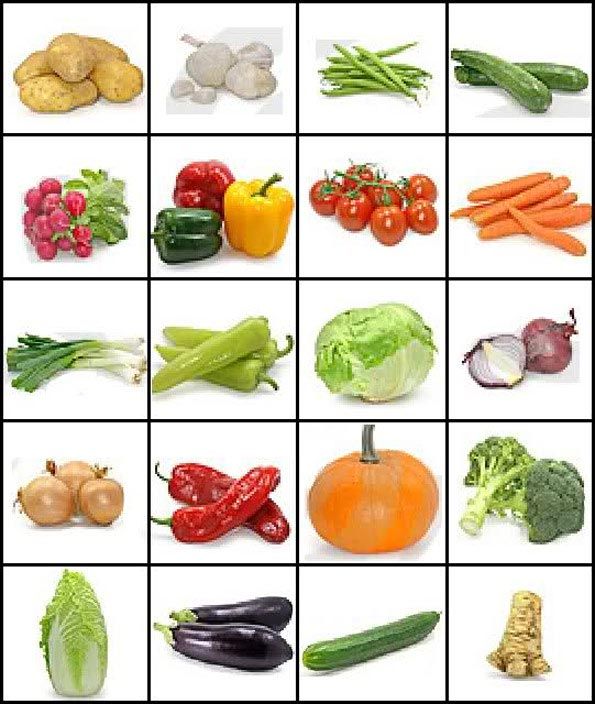
As a pediatric dietitian, my list of the top ten best vegetables for babies is:
- Broccoli
- Peas
- Sweet Potatoes
- Asparagus
- Carrots
- Oyster Mushrooms
- Artichokes
- Brussels Sprouts
- Acorn Squash
- Beets
(See how there are so many different colors represented here? That’s so great for nutritional, textural, and taste variety!)
There’s a LOT more info on why I love each veggie so much below—plus safe ways to serve them, and baby-friendly, veggie-packed meal ideas! So be sure to keep on reading.
Let’s Talk Phytonutrients
Before we start, I want to mention a group of plant compounds called phytonutrients. Because vegetables are not just made up of carbohydrates, fiber, and a little bit of protein or fat. They also contain these complex and multi-dimensional little health warriors that support so many important body processes.
Phytonutrients (also called phytochemicals) are important and highly beneficial compounds found in the plants we eat. They are non-nutritive—meaning they don’t carry calories or actual nutritional components—but they serve a variety of purposes.
They are non-nutritive—meaning they don’t carry calories or actual nutritional components—but they serve a variety of purposes.
A common phytonutrient you’ve probably heard of is beta-carotene. Beta-carotene is in the carotenoid family of phytonutrients and is found in all orange, yellow, red vegetables. It’s what gives those vegetables their colors! Beta-carotene is a compound that our bodies convert to vitamin A, which is an important vitamin for vision health. And, it’s one of many phytonutrients found in vegetables, which all contribute to processes in the body in different ways.
Other phytonutrients you may have heard of include:
- Lycopene: Found in red and pink fruits and veggies
- Lutein and Zeaxanthin: Found in green veg like spinach and kale
- Glucosinolates: Found in cruciferous veggies like broccoli and Brussels sprouts
Some act as antioxidants, some support cell health, and some support cardiovascular function. But they are ALL great reasons to get your baby familiar with these superfoods!
But they are ALL great reasons to get your baby familiar with these superfoods!
The 10 Best Vegetables for Babies
Okay, you know when and why you want to introduce veggies. Now, let’s break down ten of the best vegetables for your baby. We’ll touch on safe preparation methods (many vegetables in their raw form are choking hazards for babies, so we need to soften ‘em up!), share nutrition information for each vegetable, and give you some helpful serving ideas and food combinations to incorporate these nutritional powerhouses into your baby’s diet.
#1 Broccoli
Broccoli is a great vegetable choice for babies. It’s loaded with immune-boosting vitamins C and K, which are important for bone health and wound healing. Broccoli is also a good source of:
- Vitamin A
- Vitamin B6
- Folate (vitamin B12)
- Iron
- Zinc
Safe Broccoli Preparation for Baby
Hard, raw broccoli can be a choking hazard for a baby. I always opt for cooked broccoli instead, because it’s safe to offer to babies who are ready for solid foods. Be sure to steam until soft—it should be able to be mashed between your fingers. You can also remove the stalk and just serve the florets if the consistency of the stalk concerns you.
I always opt for cooked broccoli instead, because it’s safe to offer to babies who are ready for solid foods. Be sure to steam until soft—it should be able to be mashed between your fingers. You can also remove the stalk and just serve the florets if the consistency of the stalk concerns you.
Quick tip – steam roasting is one of my favorite easy ways to soften veggies like broccoli for baby. This is very handy when you already are turning the oven on to cook something else! Drizzle the chopped florets with some olive oil or avocado oil and then wrap tightly in foil, making it like a little packet. Cook until nice and soft!
Of course, you can always go ahead and purée any vegetable if you’re not ready to serve it in pieces.
Baby-Friendly Meals With Broccoli
Broccoli is an easy one to serve on its own since it’s great finger food, but you can also:
- Drizzle it with olive oil or lemon juice for flavor
- Serve in it one-pot dishes like curries
- Add it to meals like omelets
#2 Peas
Peas are a great source of fiber and have a surprisingly high protein content for a vegetable! They also contain alpha-linolenic acid which is an omega-3 essential fatty acid—something we all need to get from our diets because our bodies don’t naturally produce it. It also has a good dose of:
It also has a good dose of:
- Vitamin A,
- B Vitamins (especially B6 and folate or B12)
- Vitamin C
- Vitamin K
- Iron (although not a ton!)
- Zinc
Safe Pea Preparation for Baby
Single peas may be harder for your baby to pick up until closer to nine months of age when they’ve developed the pincer grasp. Before that, it’s best to serve them mashed.
Baby-Friendly Meals With Peas
You can cook peas and serve them mashed then mix them into all kinds of things!
- Mix mashed peas with yogurt
- Serve mashed peas with butter
- Combined mashed peas and potatoes
- Serve mashed peas in soups and stews*
*Just be sure to keep an eye on your baby’s sodium intake!
#3 Sweet Potato (All Kinds)
Sweet potatoes are a strong candidate to be one of baby’s first foods! They’re rich in fiber and vitamin B6, and the different color varieties have different phytonutrients.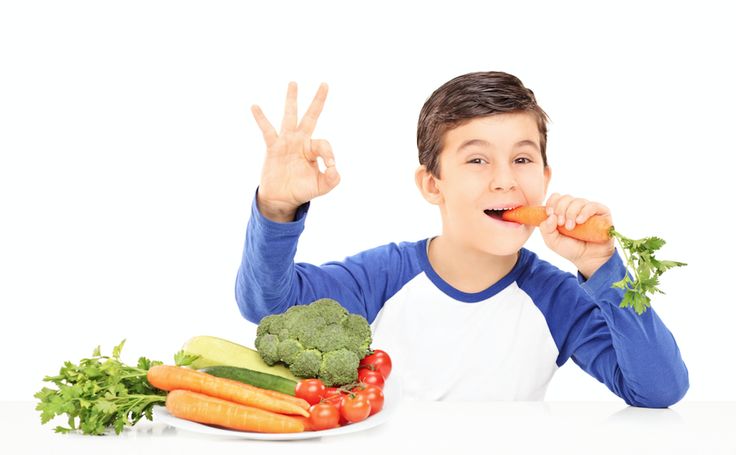 Orange sweet potatoes have beta-carotene (think vitamin A) and Japanese purple sweet potatoes have anthocyanins, which act as antioxidants in the body.
Orange sweet potatoes have beta-carotene (think vitamin A) and Japanese purple sweet potatoes have anthocyanins, which act as antioxidants in the body.
Safe Sweet Potato Preparation for Baby
Sweet potatoes need to be softened and either cut into wedges baby can hold onto (baby-led weaning style) or mashed.
Baby-Friendly Meals With Sweet Potatoes
There are so many ways to serve sweet potatoes to babies!
- Cut them into wedges and bake with olive oil and seasonings until soft.
- Bake them whole in the oven and serve them mashed.
- Make mashed sweet potatoes and mix in breast milk, yogurt, butter, or olive oil to up the fat content and make the texture easier for your baby to eat!
#4 Asparagus
Asparagus is a great source of plant-based iron for babies. Iron is an important nutrient to include in your baby’s diet because they run out of the iron stores they build up in utero at around six months of age—right around the time they start to eat solids! Plant-based sources of iron are a little harder to come by than animal sources, but are valuable ways to increase baby’s iron intake. Asparagus is also a great source of B vitamins (B6 and B12, or folate) and fiber.
Asparagus is also a great source of B vitamins (B6 and B12, or folate) and fiber.
Safe Asparagus Preparation for Baby
For young eaters, asparagus needs to be steamed in whole stalks and offered when soft.
Baby-Friendly Meals With Asparagus
- Serve whole stalks steamed with butter or seasonings.
- Add cooked asparagus to foods like omelets.
#5 Carrots
Carrots are definitely on the list of choking hazards for babies—especially baby carrots, because of their shape, size, and firmness. But, when prepared safely, they’re a great veggie choice for babies. Carrots are loaded with vitamin B6, fiber, and beta-carotene which our bodies use to create vitamin A.
Safe Carrot Preparation for Baby
Carrots can be steamed until soft and presented to baby in long, spear-like halves the width of two adult fingers. They can also be mashed! Remember, just like all other veggies, the carrot should be able to be smashed between your fingers for your baby to be able to safely handle it. Once your baby is a bit older, grated carrots are a great option, too!
Once your baby is a bit older, grated carrots are a great option, too!
Baby-Friendly Meals With Carrots
Carrots are an easy one to serve by themselves since they can be easily grasped with a palmar grasp. But, you can also dice them into small pieces, cook them, and add them to soups and stews for babies that can chew and manipulate more complex textures.
#6 Oyster Mushrooms
Mushrooms are great because they are one of the only plant sources of vitamin D—a necessary vitamin for your baby’s growth and development. Vitamin D is crucial because it helps the body absorb calcium and aids in the formation of strong bones.
Related: Best Vitamin D Drops for Babies
Oyster mushrooms specifically are a great source of vitamin D, and they’re loaded with other good stuff that makes them a great option for your baby, too. Things like:
- Protein
- Fiber
- Copper
- Iron
- Zinc
- And other vitamins!
Safe Mushroom Preparation for Baby
Mushrooms can be tricky to prepare for the youngest babies. The best thing to do is take the largest mushroom caps and sauté them. Then, present them to your baby whole, so they can grip them. Once babies are a little older, they may be able to eat oyster mushrooms cut up into small pieces, whether on their own or mixed into other dishes.
The best thing to do is take the largest mushroom caps and sauté them. Then, present them to your baby whole, so they can grip them. Once babies are a little older, they may be able to eat oyster mushrooms cut up into small pieces, whether on their own or mixed into other dishes.
Baby-Friendly Meals With Mushrooms
- Cut off the stems and sauté large tops with oil and seasonings.
- When your baby is a bit older, add small, cooked pieces to foods like omelets or meatloaf.
#7 Artichokes
Artichokes may seem intimidating to prepare and serve to a baby, but they’re a wonderfully nutritious option, so it’s worth the work if you have the time! Artichokes are packed with healthy fat and some protein, contain vitamins K, C, and B, plus magnesium and several other vitamins and minerals.
Safe Artichoke Preparation for Baby
Start by steaming artichoke hearts and serving them to baby whole. Eventually, you can move to serve them smaller pieces—but only once they’ve developed the pincer grasp.
Eventually, you can move to serve them smaller pieces—but only once they’ve developed the pincer grasp.
Baby-Friendly Meals With Artichokes
- Serve steamed artichokes whole, with a little seasoning if you feel like adding it.
- Once the pincer grip is there, offer small, cooked pieces either on their own or mixed into dishes. You know what would be delicious? A piece of lightly toasted sourdough topped with a mixture of greek yogurt, feta, and diced artichoke hearts. Yum!
- When your child is old enough, the fleshy petals of the artichoke can also be used to dip in sauces or dips.
#8 Brussels Sprouts
Brussels sprouts used to have a bad rap, but they can be pretty delicious. They’re also a nutritional superstar! They are a great source of vitamin C, vitamin K, vitamin A, and folate.
Safe Brussels Sprout Preparation for Baby
Quartered Brussels sprouts should be steamed to the point where they’re almost coming apart, then served to baby. You can also buy the shredded kind, then bake or sautee them with olive oil and seasonings—but your baby may need help eating this form if they have yet to develop a pincer grasp.
You can also buy the shredded kind, then bake or sautee them with olive oil and seasonings—but your baby may need help eating this form if they have yet to develop a pincer grasp.
Baby-Friendly Meals With Artichokes
- Serve soft cooked, quartered Brussels sprouts to baby with any seasoning you choose to add.
- Add cooked, shredded Brussels sprouts to other dishes when baby is ready!
#9 Acorn Squash
There are several different squash varieties out there, and they’re all great options to serve your baby. But I love acorn squash for its easy preparation and shape. It’s got a good amount of B vitamins, some vitamin C, magnesium, and of course, carotenoids.
Safe Acorn Squash Preparation for Baby
To prepare acorn squash:
- Remove the seeds
- Cut it into wedges
- Roast in olive oil and seasonings
The wedge shape is easy for baby to grip and chew on, and the soft texture of the squash is great for new eaters.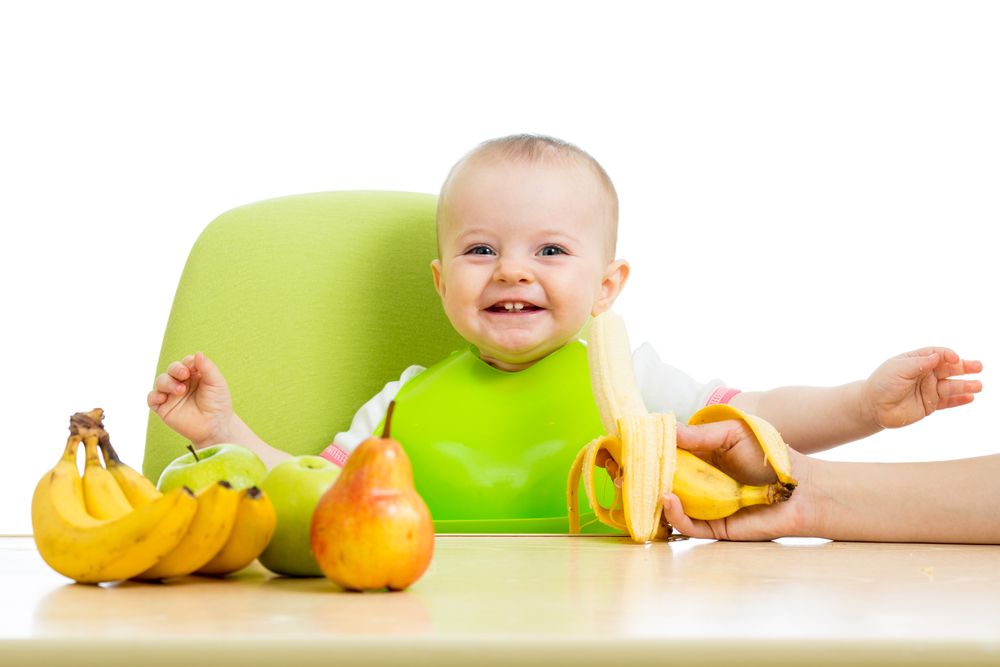 It may feel weird to give them such a big piece! But this can be a safe way to help them learn to take bites of something.
It may feel weird to give them such a big piece! But this can be a safe way to help them learn to take bites of something.
Baby-Friendly Meals With Acorn Squash
- Serve the roasted acorn squash wedges I described above.
- Mash cooked acorn squash and fortify it with yogurt or breast milk.
- Mash cooked acorn squash with cooked red lentils.
- Add cooked acorn squash to other dishes, like soups or curries.
#10 Beets
Beets are a wonderful food for babies. They have good fiber content, they’re rich in iron, and they have many important phytonutrients, including those from a class called phenols that help promote cardiovascular health.
Safe Beet Preparation for Baby
Beets can be tricky to prepare because of their shape. And, they’re known for being super messy. So try prepping them on the porch! For baby (and you), you’ll want to peel them, steam or boil them, and cut them down into safe-sized pieces baby can eat.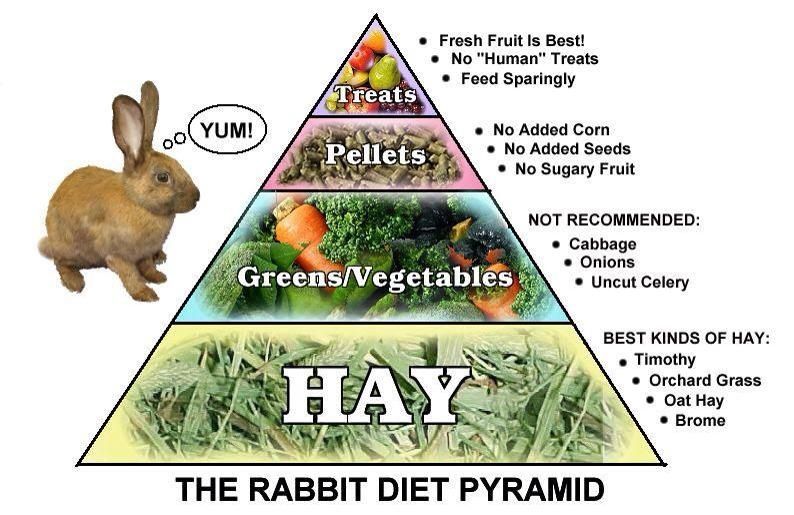 Or, start with golden beets. Not nearly as much of a mess.
Or, start with golden beets. Not nearly as much of a mess.
Baby-Friendly Meals With Beets
- Steam beets whole or buy them steamed and offer them in large pieces (large quarters or sticks) for baby to grip.
- Grate or mash cooked beets.
- Eventually, when baby has the pincer grasp, serve cooked beets in small, diced pieces.
A Final Word On Veggies for Babes
Veggies tend to be low in calories, so it’s always a good idea to bulk them up in your preparation before serving them to your baby. Adding oils, breast milk, whole milk yogurt or coconut milk yogurt as you cook and serve them are great ways to increase the fat content. We want fat intake to be unrestricted in the first two years of life, so opting for good fat sources like whole milk yogurt or olive oil is a great way to make sure baby is getting the fat they need for their central nervous system development. Also, feel free to season baby’s vegetables with herbs and spices. Just hold off on adding salt until after their first birthday!
Just hold off on adding salt until after their first birthday!
Don’t get discouraged if your baby doesn’t love asparagus or beets right away. Kids can sometimes be slower to learn to like veggies than fruit or other carbs. Offer them anyway, and do it consistently. The progress may feel slow (or non-existent), but trust me, every exposure you give them goes a long way in helping them get acquainted with—and stay open to—all the best veggies have to offer.
Remember: You’re offering them safe, nutritious options. And your work ends there! It’s their job to decide what and how much to put in their mouth!
Let’s Make Solids
Easier On You!Starting—and continuing—solids is hard. Especially if it’s your first time through, or you had a really tough time with your first baby, who went on to become a picky eater! My Simply Solids Guide will make this WHOLE process so much easier on you.
With the Simply Solids Quick Guide, you’ll:
- Get through the fear of the unknown world of solids
- Learn exactly how and when to start
- Understand how to handle gagging & choking
- And be ready to move past purees
Plus, the whole guide is now FREE! Don’t miss out!
Make Solids Simple
What vegetables can be given to a child for complementary foods
- Polina Alexandrovna, what is complementary foods?
Complementary foods are foods that are different from the breast milk or formula that a child is used to receiving.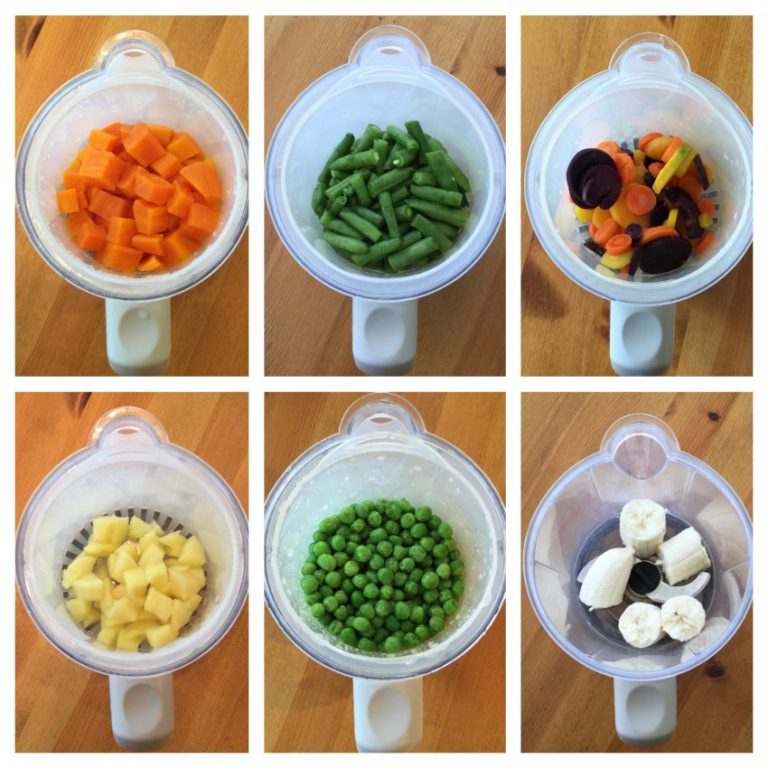 Complementary foods are a gradual transition from dairy nutrition to a common table.
Complementary foods are a gradual transition from dairy nutrition to a common table.
— In what cases is it recommended to start complementary foods with vegetables rather than cereals or fruits?
- WHO does not give specific recommendations, since different countries have different menus. The Union of Pediatricians of Russia recommends vegetable purees or cereals as the first complementary foods. nine0005
- Introduction of complementary foods up to 6 months, constipation tendency or excessive weight gain in the child - it is recommended to start with vegetable complementary foods.
- The introduction of complementary foods at 6 months, insufficient weight gain or frequent stools in a child is a reason to prepare porridge to start complementary foods.
— What vegetables should I start complementary foods with and how to introduce a second vegetable into my baby’s complementary foods?
- For the first feeding, hypoallergenic vegetables are recommended, which are less likely to cause allergies - zucchini, cauliflower or broccoli. Which vegetable from the list will be the first, and which next - it doesn’t matter, you can focus on the feelings of the child and the convenience of the mother. nine0005
Which vegetable from the list will be the first, and which next - it doesn’t matter, you can focus on the feelings of the child and the convenience of the mother. nine0005
- Polina Alexandrovna, vegetable puree or juice with pulp - which is more useful, how to combine?
- Fruit and vegetable juices are not recommended as the first feeding - they have much less fiber, dietary fiber compared to vegetable purees. In addition, the sugar from the juice is absorbed quickly and the concentration of sugar in the blood rises sharply. Therefore, basically complementary foods begin with monocomponent vegetable purees.
In the future, juices may be present in the baby's diet, and they can be combined with vegetables. But if the mother introduces juice, then let the child not give anything new. It is impossible to introduce several different products at one meal - if the baby is given vegetable puree and fruit juice at the same time, then in case of an allergic or other reaction, the mother does not understand what she came up with.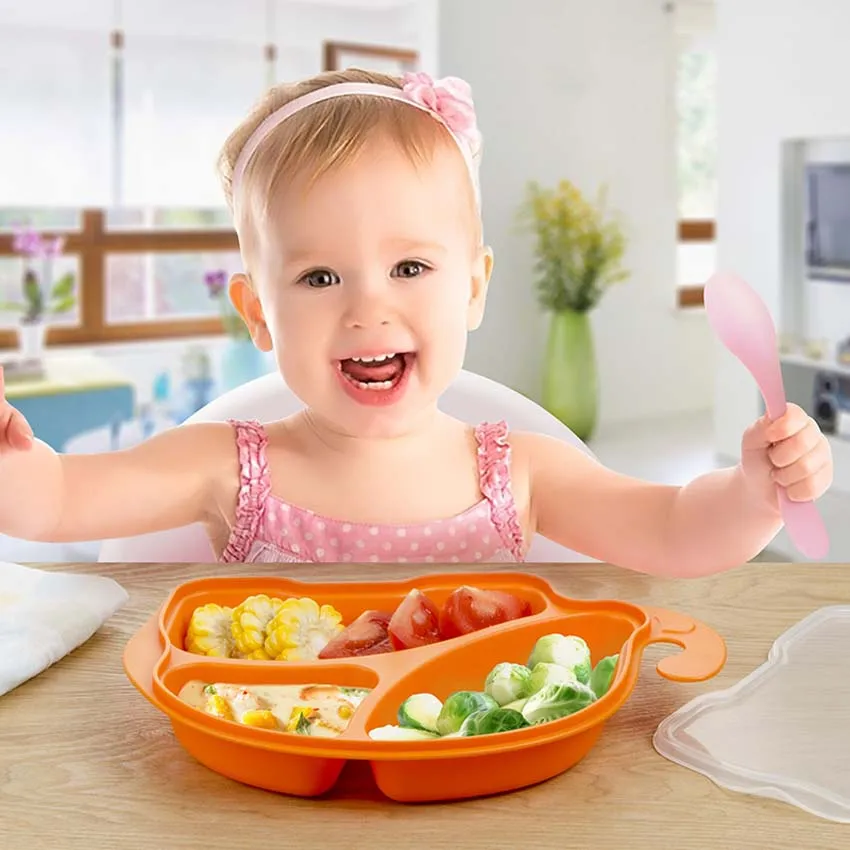 nine0005
nine0005
— How many vegetables to give in the first feedings?
- The introduction of new products in the first feeding begins with the so-called microdose - this is ½ or one teaspoon. On the second day, the portion increases to 2-3 teaspoons. In a week, its volume is brought to the age norm. The main thing is to increase the portion gradually.
- What time of day to give vegetable complementary foods - is it considered better in the second feeding? nine0005
- By and large, this is fair and convenient - they began to give vegetables to the child for lunch and continued to do so after expanding the diet. Neither mother nor child will have to change the structure of feeding and rebuild.
You can give such complementary foods at other times, but remember the rule - to introduce new products in the morning and monitor the reaction of the child. When the introduction of porridge begins, vegetables will shift to a later meal, and porridge to an earlier one.
- Do I need to add formula milk or breast milk to the puree?
- Breast milk and infant formula are not added to puree. But vegetables are less satisfying than dairy food, so the child can receive supplementary feeding with mother's milk or formula immediately after taking vegetable puree. In this case, it is necessary to observe the age norm for breastfeeding or artificial feeding.
- Is it correct to give vegetables first and then breast milk/formula or vice versa? nine0004
- When introducing complementary foods, the child does not yet know that, in addition to breast or bottle, you can get enough in another way. If breast or formula is given first, the baby will be full by the time mom gives vegetables. The kid with great pleasure and interest tries unusual food when he is hungry.
- Is there a procedure for introducing vegetables into complementary foods by months?
- The scheme and sequence of introducing vegetables for complementary foods is simple - you need to start with hypoallergenic foods, expand the diet with vegetables that are more likely to cause childhood allergies: nine0005
- zucchini, cauliflower, broccoli - 4-6 months;
- pumpkin, carrot, potato - 6 months;
- beets, tomatoes and other vegetables - 7-8 months.

Interesting: according to my mother, vegetable puree of industrial production is less tasty than homemade. In practice, many babies refuse homemade puree and are happy to eat ready-made complementary foods from the first spoon. nine0005
- How to cook vegetables for feeding babies on your own?
- When preparing baby food, mom needs:
- minimum water to cover vegetables;
- cook vegetables under the lid for a minimum period of time without overcooking them - this way nutrients and vitamins are preserved to the maximum;
- when grinding, add the decoction to the puree - then its consistency will not be very dense; grind the product carefully - there should be no pieces and unground parts in the puree. nine0016
- How long does the cooked puree last?
- The recommendations will be the same as for the factory puree.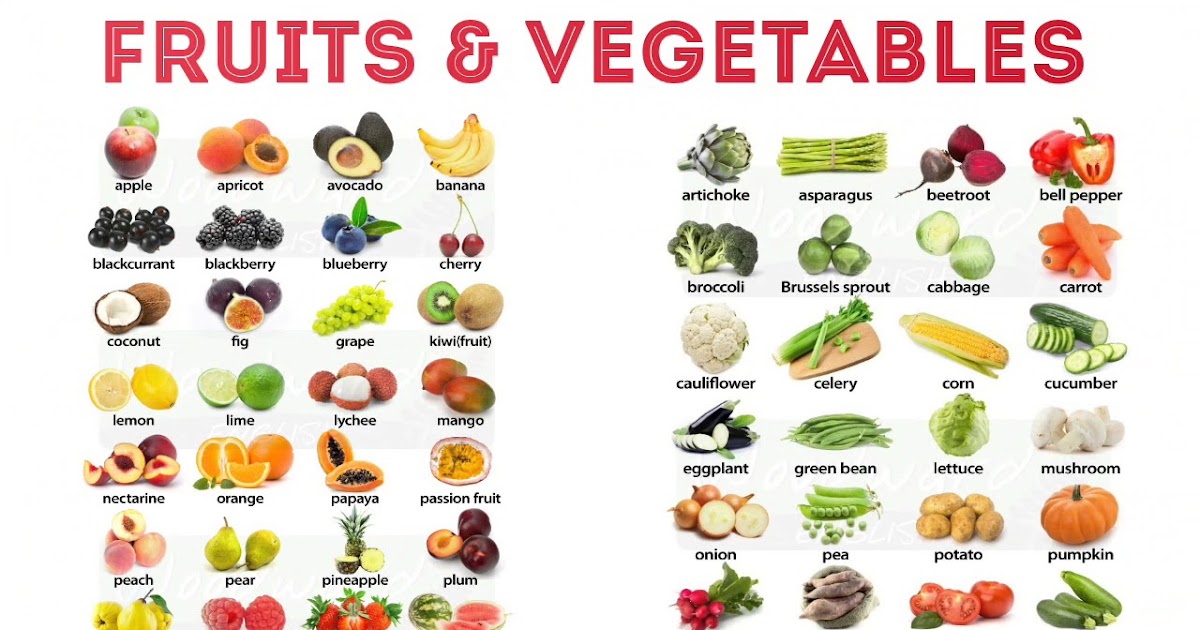 For more than a day, self-prepared baby food is not stored. And the food that you still plan to give your child is better not to put it in the refrigerator door with the highest possible temperature, but on the middle shelves.
For more than a day, self-prepared baby food is not stored. And the food that you still plan to give your child is better not to put it in the refrigerator door with the highest possible temperature, but on the middle shelves.
- Where can I get proven recipes and which sources should I trust? nine0005
- In the nutrition of a child under one year old, there is no question of special dishes. Vegetables are boiled or steamed without salt. It is important to introduce vegetables into the child's diet according to his age. Mom can also focus on preferred flavor combinations.
- Polina Aleksandrovna, what vegetables should not be given to babies?
- There are no vegetables that cannot be given to a child under one year old (allergies often occur on berries and red fruits - they are not recommended to be tried). After eight months, the baby gets acquainted with almost all vegetables. nine0005
Things to look out for:
- Bright red vegetables have a higher potential for allergy.
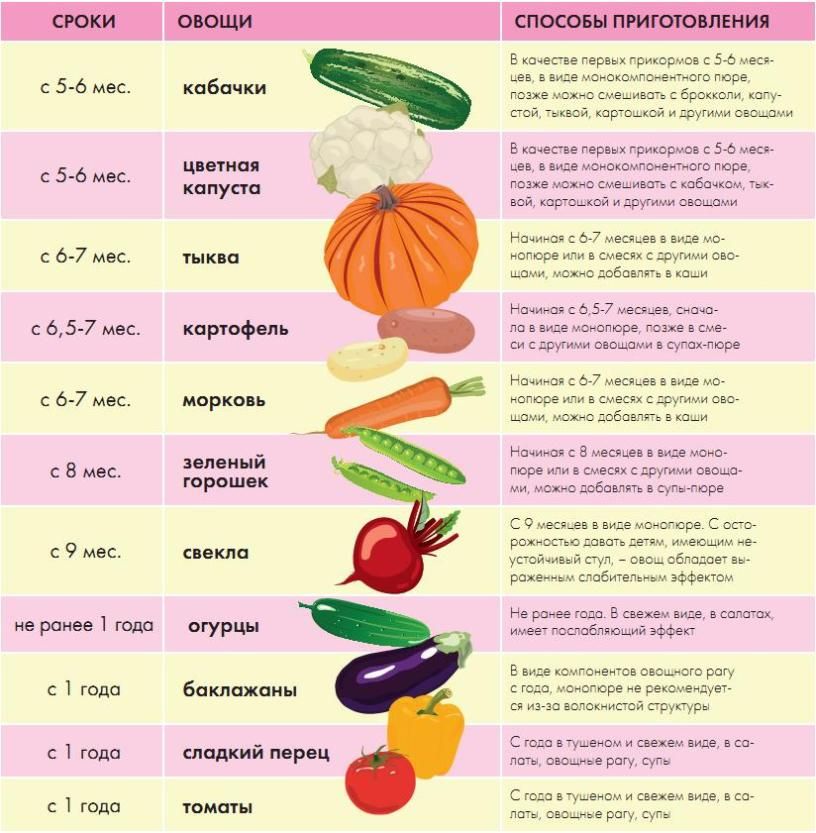 We introduce the baby to such vegetables later.
We introduce the baby to such vegetables later. - It is difficult to choose quality vegetables. An allergic reaction may occur not to a vegetable, but to the substances with which it is processed.
Advice for mom: Use ready-made commercially produced complementary foods for children or buy vegetables from trusted sellers. nine0005
MAMAKO ® ORGANIC cereals are a combination of organic cereals and fruits and 32% ORGANIC farm goat milk.
— What if the child does not like vegetables?
- When a child is reluctant to eat vegetables, you should not force him - the more you force, the more the baby resists attempts to feed him. Your child will not immediately appreciate the vegetable you give. It is important to offer him mashed potatoes regularly and persistently enough, but not overdo it. If the child does not like one vegetable during the week, offer another. In addition, vegetable puree from different manufacturers has different tastes, and you can choose the one that your baby will like. nine0005
It is important to offer him mashed potatoes regularly and persistently enough, but not overdo it. If the child does not like one vegetable during the week, offer another. In addition, vegetable puree from different manufacturers has different tastes, and you can choose the one that your baby will like. nine0005
Advice for mom: Even if you haven't started complementary foods yet, your baby needs to be introduced to the culture of eating. Dine with your baby - he is interested in seeing what mom and dad are eating, and he should want to try adult food and join the general diet.
— What vegetable dishes can be offered to older children?
- Firstly, older children eat no longer homogeneous puree. Every month we offer the child larger and denser pieces (at first small and soft, so that the baby can easily chew them, and then, when he begins to chew well enough, larger pieces). nine0005
Secondly, a child of 7-8 months gets acquainted with new dishes (soups, dairy products). And at this age, goat's milk cream soup with pumpkin or spinach is well suited for a children's diet.
And at this age, goat's milk cream soup with pumpkin or spinach is well suited for a children's diet.
At the stage of preparation for the introduction of complementary foods, it is important not to miss the food interest - you should introduce the baby to meals and introduce him to the exciting process. When your baby is ready, you can offer him hypoallergenic vegetables in a gentle vegetable puree. After the baby falls in love with some vegetables, his diet will gradually be enriched. And let the process of expanding the menu of your little gourmet be interesting along with healthy and tasty vegetable cream soups MAMAKO ® .
* Breast milk is the best food for babies. WHO recommends exclusive breastfeeding for the first 6 months of a child's life and continued breastfeeding after complementary foods are introduced until the age of 2 years. Before introducing new products into the baby's diet, you should consult with a specialist. The material is for informational purposes and cannot replace the advice of a healthcare professional. For feeding children from birth.
For feeding children from birth.
Vegetables and fruits for the baby. When and what to give?
Babies grow fast and therefore need a lot of nutrients. By the age of 6 months, usually, the baby receives everything he needs with his mother's milk or formula. But this is only up to 6 months of age, and then, according to WHO recommendations, the child's diet should be supplemented with complementary foods.
The first foods offered to a child at 6 months of age may be cereal, vegetable or fruit puree. nine0005
Regarding the introduction of vegetables and fruits, there are different opinions about whether it is better to give vegetables or fruits first.
Vegetables or fruits?
Pediatricians often recommend starting your baby's introduction with mashed vegetables, because fruit is sweeter and some children may refuse vegetables later on. In fact, it is very individual. An important argument in favor of vegetables is the fact that fruits are not the main meal and, therefore, they can be offered as a snack, dessert, or added to cereals and sour-milk products.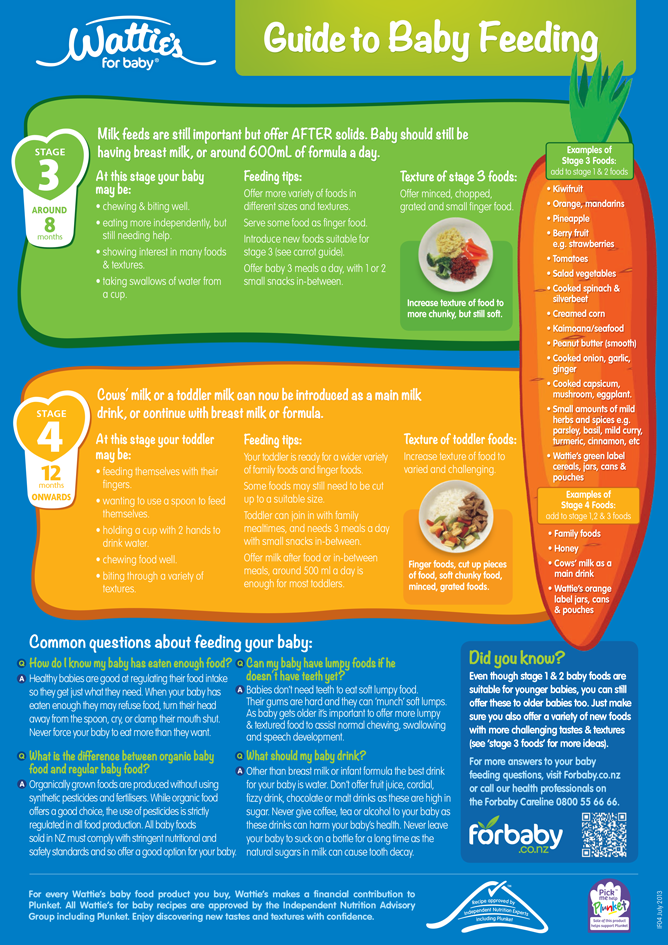 nine0005
nine0005
But vegetable puree is introduced into the baby's diet as the main dish, to which meat will be added later.
To get the most out of new foods, no matter what kind, introduce them to your baby in the right way.
How to choose fruits and vegetables for a baby?
For the first acquaintance, it is advisable to use the vegetables of our climatic zone: zucchini, cauliflower, broccoli, pumpkin, potatoes, squash. Give preference to seasonal vegetables. You need to start with one type of vegetable, and only after the child has received each of them separately, you can mix them. nine0005
Pediatricians recommend apples, peaches, apricots, plums as the first fruits.
What is better to choose: mashed potatoes in jars or cook it yourself?
There is no unequivocal opinion on this issue either among doctors or mothers.
Many people find that homemade vegetable or fruit puree is healthier because it retains nutrients, vitamins and minerals better.
Another part of the experts argue that modern growing conditions do not guarantee the safety of fruits and vegetables for young children, as they may contain a large amount of nitrates or pesticides. nine0005
Unfortunately, if vegetables and fruits are not from your own garden and you do not know where and how they were grown and how they were processed, then it is better to give preference to children's vegetable or fruit puree from jars.
Preference is given to industrial purees even when the beginning of acquaintance with vegetables and fruits falls outside the season of vegetables and fruits. If winter and zucchini are only imported, and apples have been stored in vegetable stores for quite a long time, then they are unlikely to be safe for a small child. nine0005
According to modern requirements for baby food products, vegetables and fruits for commercial baby foods are grown in special raw materials zones without the use of chemical fertilizers and pesticides. Modern production technologies make it possible to preserve vitamins and minerals as much as possible and provide the necessary consistency, in accordance with the characteristics of the digestive system and chewing apparatus of the baby.
Modern production technologies make it possible to preserve vitamins and minerals as much as possible and provide the necessary consistency, in accordance with the characteristics of the digestive system and chewing apparatus of the baby.
Industrial purees also allow you to choose your baby's favorite vegetable or fruit, regardless of the season. nine0005
If you have your own garden and grow organically, you can confidently prepare vegetable and fruit dishes at home.
How to prepare vegetables and fruits for a baby at home?
When preparing vegetables and fruits, observe the following rules:
- select only good, undamaged, fresh vegetables and fruits
- wash them thoroughly before cooking
- cook just before feeding your baby. nine0016
For a child of the first year of life, vegetables are boiled or cooked in a double boiler without salt and pepper. Grind with a blender or carefully grind to a homogeneous creamy consistency. If the puree is too thick, you can add a little vegetable broth in which the vegetables were boiled.
If the puree is too thick, you can add a little vegetable broth in which the vegetables were boiled.
Vegetable puree is given warm, the optimum temperature of the puree for feeding is 37 - 38ºС.
Fruit can be given fresh or baked in the oven. But like vegetables, fruits should be chopped and peeled. nine0005
Fruit can be grated on a plastic grater or chopped in a blender. The grater or blender must be poured over with boiling water before preparing the puree!
When the child has 6-8 teeth, you can give a piece of fruit and he will eat it on his own.
Remember not to chase exotic fruits as they can cause an allergic reaction in your baby. Useful substances are better absorbed from fruits that are traditional for our climatic zone.
How many fruits and vegetables does a baby need?
A child can eat only a certain amount of vegetable and fruit puree per day in order to avoid indigestion. This amount depends on the age of the baby.
Approximate recommended daily allowance for vegetable puree is
50-100g for 6 month old baby, 150g for 7 month old baby, 170-180g for 8-9 month old baby, and from 10 to 12 months the amount of vegetable puree can be increased up to 200 g *. nine0005
Your pediatrician will help you determine the right amount of puree for your baby.
But, regardless of the age of the child, acquaintance with each new product should begin with no more than 1 teaspoon and gradually increase to the recommended age norm!
A child needs 2 times less fruit purees than vegetables.
Children at 6 months can consume 40-50g of fruit puree, at 7-8 months 50-70g, at 9-12 months 80-100g*. nine0005
What to combine vegetables and fruits with?
Vegetable and fruit purees are low-protein complementary foods, therefore they are given as an independent dish for no more than 2 weeks, then it is necessary to enrich them with high-protein foods.

